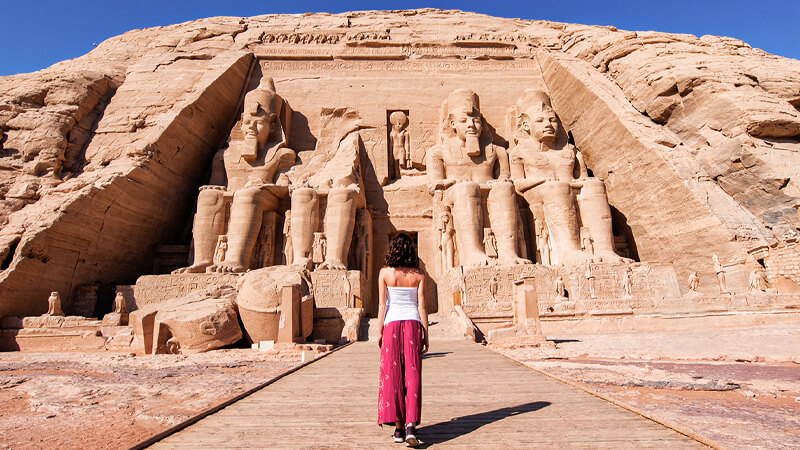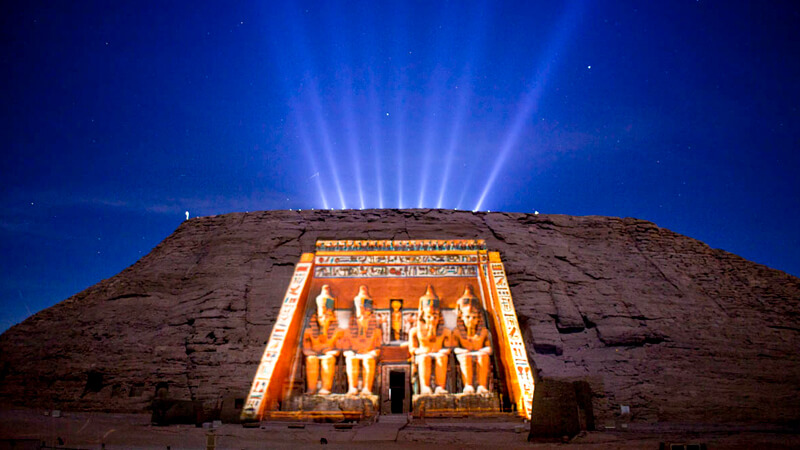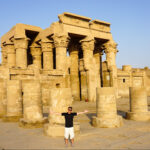The Abu Simbel Temple is one of the most famous landmarks in Aswan, next to the High Dam. Welcome to the mesmerizing world of the Abu Simbel Temple, an iconic symbol of ancient Egypt’s grandeur and artistic excellence. This article is your ultimate guide to understanding the historical significance, architectural marvels, and captivating stories surrounding the Abu Simbel Temple. Embark on a journey through time as we delve into the heart of this remarkable archaeological treasure.
Abu Simbel Temple: A Glimpse into History and Culture
Step into the past and unravel the mysteries of Abu Simbel Temple’s creation, a testament to Pharaoh Ramses II‘s power and devotion to the gods. The temple was built around 1264 BCE as a dedication to Ramses II and the gods Amun, Ra-Horakhty, and Ptah. Situated on the banks of the Nile in present-day Nubia, this temple complex holds secrets that offer insights into the religious and cultural beliefs of ancient Egyptians.

The Architectural Marvels of Abu Simbel Temple
Behold the awe-inspiring architecture that has stood the test of time. The temple’s façade features colossal statues of Ramses II, standing at a staggering 65 feet tall. These statues, carved with intricate details, showcase the pharaoh’s might and his deep reverence for the deities. The temple’s interior boasts elaborately adorned halls and chambers with mesmerizing murals depicting scenes from Ramses II’s victorious battles and religious ceremonies.
Decoding the Symbolism
Explore the hidden symbolism within the temple’s design. The alignment of the temple is ingeniously engineered, allowing the sun’s rays to penetrate the inner sanctuary and illuminate the statues of gods seated within, including a statue of Ramses II himself. This celestial alignment occurs twice a year, during the equinoxes, leading to a breathtaking spectacle that leaves visitors in awe.
Relocation: A Marvel of Modern Engineering
Delve into the incredible feat of relocating Abu Simbel Temple in the 1960s to save it from submerging by the rising waters of the Aswan High Dam. This monumental task required international collaboration and innovative engineering techniques. The temple was painstakingly dismantled and reconstructed on higher ground, preserving its splendor for future generations.

Exploring the Temple Complex
Uncover the various components of the Abu Simbel Temple complex. Adjacent to the Great Temple dedicated to Ramses II stands the Small Temple dedicated to Queen Nefertari, Ramses II’s beloved wife. The intricate carvings and inscriptions within the Small Temple pay tribute to Nefertari’s importance and showcase her deification alongside the main gods.
The Nubian Connection
Discover the unique Nubian influence on the temple’s design and artwork. The Nubian architectural style is evident in the detailing of the columns and façade, reflecting a harmonious fusion of Egyptian and Nubian aesthetics. This connection underscores the historical and cultural ties between these two ancient civilizations.
Tourism and Conservation
Learn about the role of tourism in preserving and protecting Abu Simbel Temple. The site’s popularity has contributed to its conservation and the local economy. Efforts are in place to balance accessibility with safeguarding this invaluable heritage site for future generations.
Captivating Stories and Legends
Immerse yourself in the captivating myths and legends associated with Abu Simbel Temple. From tales of divine intervention to stories of explorers uncovering its secrets, these narratives add a layer of enchantment to the temple’s already magical aura.

FAQs about Abu Simbel Temple
What is the significance of the Abu Simbel Temple?
Abu Simbel Temple holds immense historical and cultural significance as a tribute to Pharaoh Ramses II and the ancient Egyptian gods. Its celestial alignment and architectural marvels further add to its importance.
How were the Abu Simbel Temples relocated?
The relocation of Abu Simbel Temple involved dismantling and reconstructing the structures to higher ground, showcasing an extraordinary achievement in engineering and preservation.
Why were the Abu Simbel Temples built?
The temples were built by Ramses II to showcase his power and devotion to the gods and to immortalize himself through intricate carvings and statues.
Can visitors enter the interior of the temples?
Yes, visitors can explore the interior of both the Great and Small Temple, marveling at the elaborate designs and artworks that adorn the chambers.
What is the significance of the celestial alignment?
The celestial alignment of Abu Simbel Temple is believed to be a deliberate architectural feature that allows the sun’s rays to illuminate the inner sanctuary, highlighting the seated statues of gods.
How can I reach Abu Simbel Temple?
The temple can be reached by air or water, with tours and transportation options available from Aswan. Planning the visit during the equinoxes is recommended to witness the spectacular alignment.
Conclusion
As you conclude your virtual journey through the splendors of the Abu Simbel Temple, you’ve gained a profound appreciation for its historical, architectural, and cultural significance. This magnificent testament to human creativity and devotion continues to inspire awe and wonder, inviting visitors to connect with the rich tapestry of ancient Egyptian civilization. So, plan your visit to Abu Simbel Temple, stand before the colossal statues, and immerse yourself in a world that seamlessly intertwines the past and the present.




